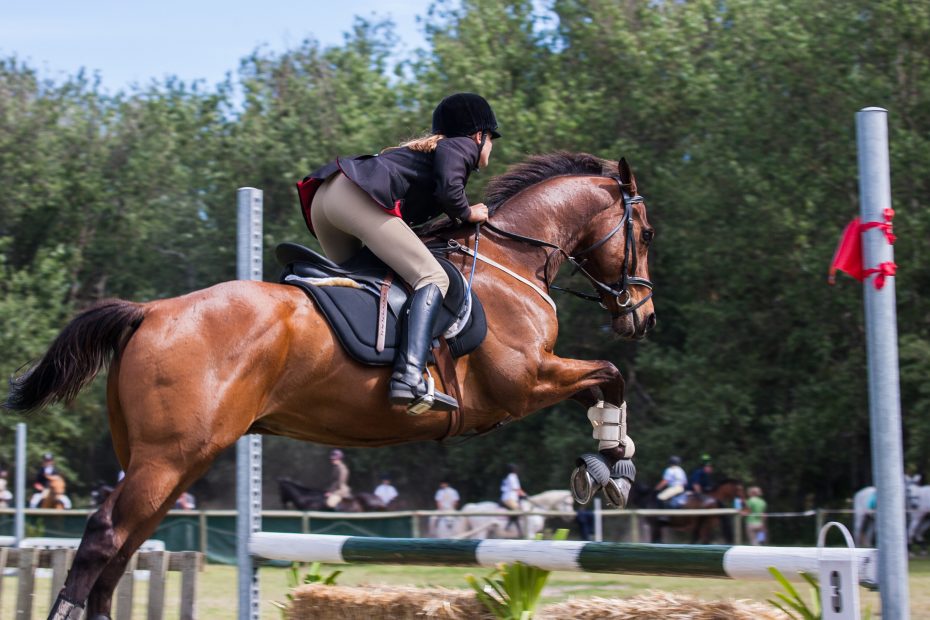The contents of a tack box can vary from person to person. Everyone has their own individual preferences. There are some items that are staples and should be in every box. What do you really need to be ready to ride? What do you like to keep in your tack box?
English or western, trail riding or eventing; here is a list of some must-haves. Don’t leave the stable without these necessities.
Brush or comb
Bristle brushes or curry combs. Metal, rubber, or plastic. Grooming your horse increases blood flow to the surface of the skin and helps keep their coat shiny. Groom before riding
Hoof Pick
This basic tool keeps your horses’ hooves clean daily. They are cheap and available at every feed store. You can also buy them online.
Gloves
Protect your hands and keep them warm. If you are jumping or participating in any kind fo extreme equine competition gloves are a must.
Fly mask
In the summer the flies are relentless. 2020 may be even worse. It’s hot, it’s dry and it may be smoky. Protect your horse from UV rays and field with a fly mask.
Horse treats and cookies
Treats, cookies or carrots, and apples. You know these yummy snacks are probably your horses’ favorite thing ever. Keep nonperishable treats in a resealable bag or jar. Bring fresh treats daily.
Sheet
A light sheet can keep your horse warm on a cool night. Also, essential after a pre-show bathing. A cotton sheet is not for frigid winter but a night that has a chill. Make sure you use the correct size and don’t leave it on for days without at least pulling it off to groom your horse.
Splint boots
These boots will protect your horse and give extra support during strenuous exercise. Jumping, reigning, or trail riding on an extreme course are all examples of times you may want to use splint boots.
Halter
The most basic piece of equipment to catch, lead, and care for your horse. Don’t leave halters on in the paddock or stall as they may get caught and cause injury. Leather or heavy nylon styles are available. They come in a color or style for every horse lover.
Standing wraps
Standing wraps are made to give your horse with extra leg support. Use for day to day riding tasks.
Rubber boots
If you have to enter a muddy corral or paddock just once you will understand. Spare your sores and riding boots, and use rubber boots in winter or when the ground is a mess.
Saddle
It doesn’t have to be fancy, it just has to be functional. Western or English saddles are the most common. You can get fancy and have a specific saddle for dressage, or a specific saddle for jumping. You may have a saddle that fits one horse the best, and a different saddle for a horse with different anatomy.
Bridles
The bridle is the leather or nylon piece that holds your bit when riding. Some have nosebands, some simply fit over the ear.
Reins
The reins attach to your bit. They can be leather or nylon. It is wise to keep at least one spare set on hand in case yours break.
Cinch or Girth
Depending on if you are riding English or western style you will have a cinch or girth to keep your saddle on your horse. Inspect for sharp objects, dirt, or dried sweat that could cause saddle sores.
Helmet
It’s a fact. They are not fashionable. They are protective equipment. This is nonnegotiable. A horse is a strong and powerful creature. Even when not jumping, or doing something at high speed all riders should wear a helmet. Adults and children.
Medication
Have it on hand before you need it. Ointment, but ( pain reliever), iodine type solution, etc. The time to buy equine first aid supplies is NOT when you need them.
Cleaning supplies
A clean tack is a serviceable tack. This means that breakage occurs much less often and the lifespan of the equipment extends if you clean and maintain your tack. Keep some saddle soap, a bucket, and sponge around. Also, consider having some leather dressing to oil your saddle after it is cleaned and dried.
Saddle Pads
You should have pads dedicated just for practice and pads for events and shows. Make sure the pad you use works with the type and cut of the saddle you are using. Make sure when it’s placed it won’t slip back behind your horse’s shoulders when riding. Also, make sure it’s placed in a way that it won’t cause saddle sores or rub the hair off.
Coat Conditioner And Shampoo
Occasional bathing is good for your horse. It’s also a necessity pre-show. Over bathing can dry out the horse’s skin. Keeping shampoo around for the occasions you need it is a huge pre-show time saver. You can use a coat conditioner to supplement a great grooming program, combined with good nutrition. A healthy horse will look even better with a coat conditioner.
There is a limitless supply of equipment you can have on hand for your horses. It is fun having your own custom sprays, grooming products, and care items for your horse. If you own more than one horse the amount of tack you have will be even greater. The more experience that you have and the more time you have working with horses will help you to develop your preferences.
Keep necessities and try to restock the most important items long before running out. It is always good to be prepared for whatever you may need to keep your horse safe, comfortable, and happy.
A couple of times a year restock your equipment so you are always ready for what a day at the stable brings. Keep tack and equipment clean and ready to go. Your horse will love you for it.
